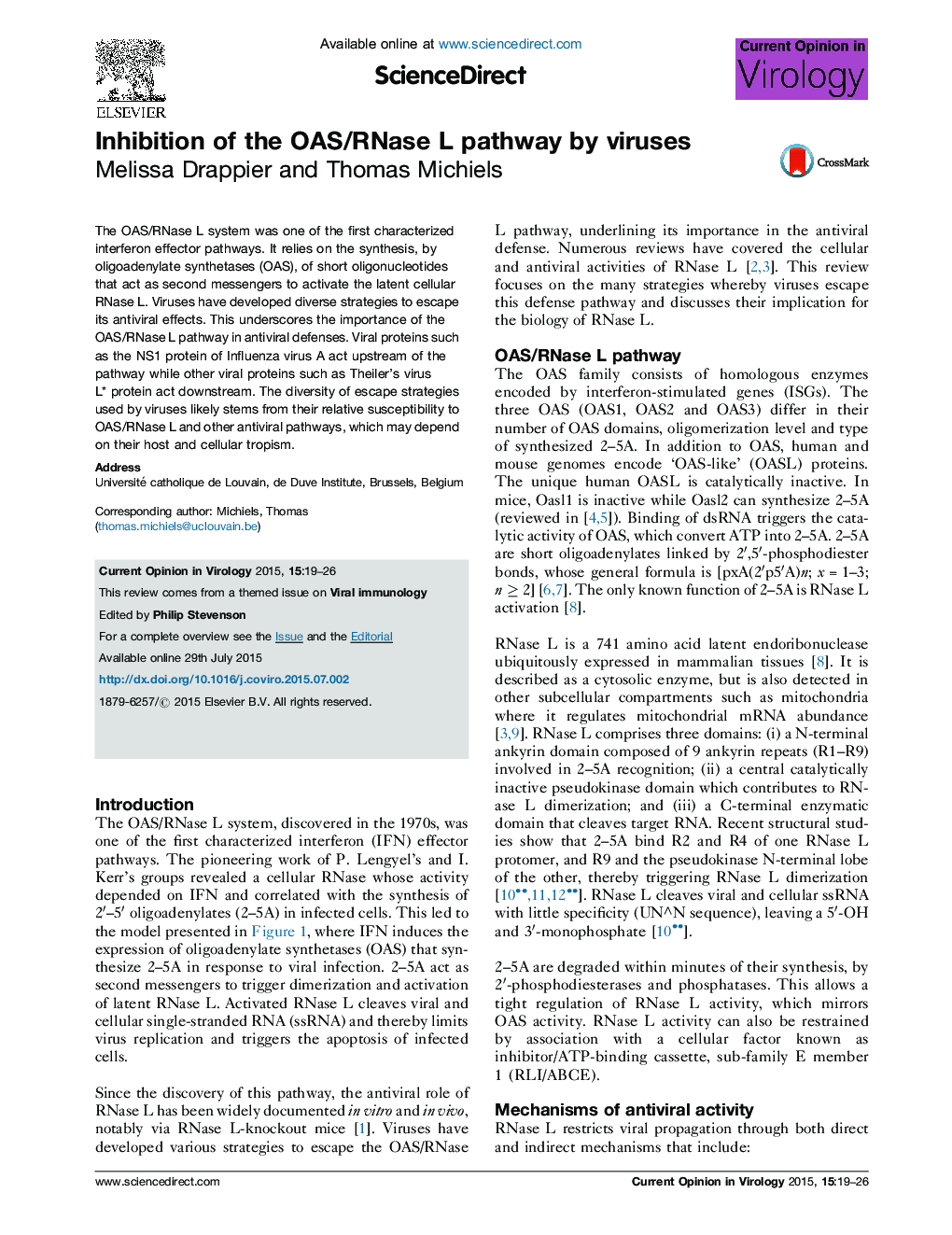| Article ID | Journal | Published Year | Pages | File Type |
|---|---|---|---|---|
| 2473207 | Current Opinion in Virology | 2015 | 8 Pages |
•The OAS/RNase L pathway was one of the first characterized IFN effector pathways.•2–5A molecules link ankyrin domains of two RNase L protomers to activate the enzyme.•Viruses evolved a variety of strategies to escape the OAS/RNase L host response.•Antagonism by viruses highlights the importance of RNase L as an antiviral defense.•Why do some viruses act upstream and others downstream of the pathway?
The OAS/RNase L system was one of the first characterized interferon effector pathways. It relies on the synthesis, by oligoadenylate synthetases (OAS), of short oligonucleotides that act as second messengers to activate the latent cellular RNase L. Viruses have developed diverse strategies to escape its antiviral effects. This underscores the importance of the OAS/RNase L pathway in antiviral defenses. Viral proteins such as the NS1 protein of Influenza virus A act upstream of the pathway while other viral proteins such as Theiler's virus L* protein act downstream. The diversity of escape strategies used by viruses likely stems from their relative susceptibility to OAS/RNase L and other antiviral pathways, which may depend on their host and cellular tropism.
Graphical abstractFigure optionsDownload full-size imageDownload as PowerPoint slide
